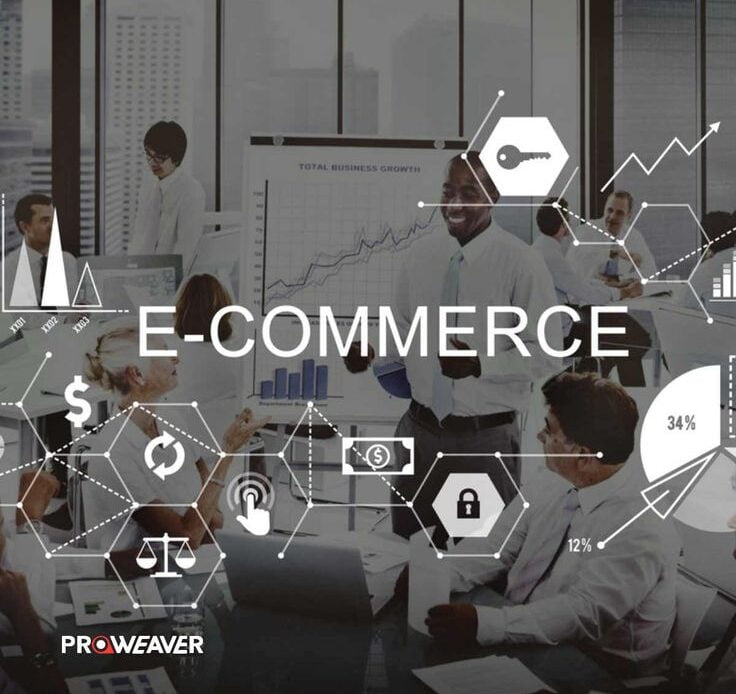Avoid These Devastating E-Commerce Pitfalls: Unlock Powerful Solutions For Online Success
Introduction
E-Commerce Challenges;
The digital revolution has transformed the way businesses operate, with e-commerce emerging as a dominant force in the global marketplace. The convenience of online shopping, the ability to reach a broader audience, and the potential for increased profitability have made e-commerce an attractive venture for many entrepreneurs and established companies alike. However, beneath the surface of this promising landscape lie numerous challenges that can impede success and growth.
The Allure and Reality of Online Retail
E-commerce offers unparalleled opportunities for businesses to expand their reach and cater to a global customer base. The lower overhead costs compared to traditional brick-and-mortar stores, combined with the ability to operate 24/7, make it an enticing option.
Yet, the reality is that the digital marketplace is highly competitive and fraught with obstacles that require careful navigation.
Understanding the Multifaceted Challenges
To thrive in the e-commerce sector, it’s essential to recognize and address the various issues that can arise. These challenges are multifaceted, encompassing technological, logistical, financial, and customer-related aspects. By gaining a comprehensive understanding of these issues, businesses can develop strategies to mitigate risks and capitalize on opportunities.
Technological Hurdles
One of the primary challenges in e-commerce is ensuring a seamless and secure technological infrastructure. Website performance, user experience, and cybersecurity are critical factors that influence customer trust and satisfaction.
A slow-loading website or a complicated checkout process can lead to cart abandonment, while inadequate security measures can result in data breaches and loss of customer confidence.
Logistical Complexities
Efficient logistics and supply chain management are vital for timely order fulfillment and customer satisfaction. E-commerce businesses must navigate challenges such as inventory management, shipping delays, and handling returns.
These logistical complexities can significantly impact the customer experience and the overall profitability of the business.
Financial Considerations
Managing the financial aspects of an e-commerce business involves more than just processing transactions. Businesses must contend with issues such as fluctuating payment processing fees, currency exchange rates for international sales, and the potential for fraudulent transactions.
Developing robust financial systems and fraud prevention measures is crucial for maintaining profitability and trust.
Customer Expectations and Experience
In the digital age, customer expectations are higher than ever. Shoppers demand personalized experiences, prompt customer service, and hassle-free returns.
Meeting these expectations requires a deep understanding of customer behavior and the implementation of strategies to enhance engagement and loyalty.
Regulatory and Compliance Issues
E-commerce businesses must also navigate a complex web of regulations and compliance requirements, which can vary significantly across different regions and countries.
Issues such as data protection laws, taxation, and consumer rights legislation must be carefully managed to avoid legal complications and maintain a reputable brand image.
The Importance of Strategic Planning
Addressing these challenges requires a proactive and strategic approach. Businesses must invest in technology, develop efficient operational processes, and prioritize customer satisfaction. By doing so, they can not only overcome the inherent challenges of e-commerce but also position themselves for long-term success in the digital marketplace.
Almost anything can be purchased through e-commerce, which makes it highly competitive. Some businesses sell exclusively online or use ecommerce to expand the reach of their other distribution channels. Either way, ecommerce is thriving and can be a profitable venture.
E-commerce or “electronic commerce” is the trading of goods and services online. The internet allows individuals and businesses to buy and sell an increasing amount of physical goods, digital goods, and services electronically.
E-commerce is generally conducted over computers, tablets, smartphones, and other smart devices. It can be a substitute for brick-and-mortar stores, though some businesses choose to maintain both.
E-commerce operates in several market segments including business-to-business, business-to-consumer, consumer-to-consumer, and consumer-to-business.
Ecommerce offers people the convenience of shopping from their computers, phones, tablets, and other devices. They visit websites, social media pages, and other virtual channels to find what they’re looking for. Entrepreneurs, startups, small and medium-sized businesses, and large retailers can all use e-commerce to reach customers across the globe. Selling online might be a business’s sole revenue source, or it might be part of a multi-channel selling strategy.
For example, a large brick-and-mortar retailer might adopt an online sales channel, or an entrepreneur might sell a small number of specialty like handcrafted goods through a social media site like Facebook, Instagram, or Pinterest.
A business that generates revenue solely through its presence on social media, or entrepreneurs who supplement their income using social media marketing techniques, are also engaging in social media commerce.
Other ways one can participate in e-commerce include building standalone websites, or setting up shop on an established selling website. Through these mediums, e-commerce can comfortably take place. Knowing these examples will assist in understanding and knowing how well to protect your e-commerce.
What Are The Common Issues Associated With E-Commerce?
While e-commerce has become increasingly popular and convenient for consumers and businesses alike, it also comes with several issues and challenges. These issues must be addressed to ensure that one understands how to protect his e-commerce.
Here are some of the most common issues associated with e-commerce:
1. Privacy Violation
It is no longer news that some companies sell the personal details of their customers. This is a very common issue nowadays even sometimes consumers and customers alike allow sites to fully access their devices, and also when they fill personal details in their account section these details can be used for many purposes.
E-commerce also keeps track of any activity made online or product preferences and product listing based on this information they recommend products to us and advertise on platforms which we use like Facebook, Instagram, and many more.
Privacy invasion can also be done when there is low security in the e-commerce site. Hackers can hack the servers of e-commerce sites and gets personal information of users like credit card details, phone number, and passwords.
2. Website Spoofing
It is a technique used to create the same lookalike website as other websites. When the user by mistake types any other word in place of the original word they land on a page that is the same as the original website. Or when a link is circulated among a group of persons of the fake website they basically contain malicious code or they lure customers to buy their product and give their personal details.
3. Online Piracy
It is unauthorized copyright of the original property. Many sites provide free copyright e-books, e-music, e-movies which are unethical. Sometimes original trademarks are used to sell fake products. It is basically the use of other’s content without their permission or without any right to download and distribute it. It has become the most dangerous threat to content owners.
4. Email Spamming
Email spamming is a very common way to defraud users. This technique is also known as phishing. In this, spammers sent emails to customers and lure them with products and exciting offers. They tempt users to purchase their products and give their personal details on their fake websites.
Sometimes these emails are marked as spam mails but most often when we give personal details such as name, email, phone number then they can easily send their mails to defraud users. It is also known as junk mails.
5. Security
Security is a significant issue in e-commerce. Customers must trust the online store they are purchasing from and be confident that their personal and financial information is secured from security threats such as, malware, account takeovers, cross-site scripting, SQL injections, distributed denial of service attacks (DDoS) and what have you.
Online businesses must ensure that their payment systems are secure and that they have strong measures in place to protect customer data or else data may be breached and liability follows.
6. Fraud
E-commerce is vulnerable to fraud. Fraudsters may use stolen credit card information to make purchases or create fake websites to deceive customers into sharing their personal and financial information.
Online businesses must be vigilant in detecting and preventing fraud, such as implementing security measures like two-factor authentication.
7. Privacy
Privacy concerns are another issue in e-commerce. Customers may be hesitant to share their personal information, such as their name, address, and email, with online businesses.
Companies must be transparent in their data collection and use policies and provide customers with clear options for opting out of data collection.
8. Shipping and delivery
Shipping and delivery can be a major issue in e-commerce. Customers expect timely and reliable delivery of their purchases, and online businesses must have efficient logistics systems in place to meet those expectations. Unexpected delays, lost shipments, or damaged goods can lead to customers being dissatisfied and thus eventual loss of customers.
9. Customer service
E-commerce companies must provide high-quality customer service to retain customers and build a positive reputation. Customers expect prompt responses to their inquiries and concerns and easy returns and exchanges if necessary. Online businesses must have efficient customer support systems in place to address customer issues.
10. Competition
E-commerce is a highly competitive industry, and online businesses must differentiate themselves from their competitors to succeed.
They must offer unique products, excellent customer service, and attractive prices to stay ahead of the competition.
11. Regulatory compliance
E-commerce companies must comply with a range of regulations, such as data protection laws and tax regulations, depending on their location and the locations of their customers. Failure to comply with these regulations can result in legal and financial consequences.
Business owners and customers must and ought to take several measures to abate these issues and protect content, data, and customer details from malicious actors.
How To Protect Your E-Commerce
While security is important for all websites, it is particularly important for ecommerce businesses. Business owners can protect their e-commerce through the following ways:
1. Choose a secure web host and ecommerce platform
One of the most important ways to secure your ecommerce store is to choose a reputable ecommerce platform and web host. An ecommerce platform provides everything you need to sell online, including listing products and creating checkout functionality.
Meanwhile, a web host will store your site files, database, and content and serve it to visitors when they type in your web address. WooCommerce is one of the most popular B2C and B2B ecommerce platforms.
2. Prevent ecommerce fraud
Ecommerce fraud can take a variety of forms, one of the most common being chargeback fraud. This attack on your ecommerce business occurs when a customer places an order, receives it, and then opens a dispute with their bank to reverse the purchase.
Common signs of chargeback fraud include large order volumes and a high order frequency from a single customer. You can reduce the risk of this type of fraud by contacting customers that have completed large orders. Or, you might want to limit order quantities altogether.
This way, you can automate the process of fraud detection and prevention. Another way to prevent ecommerce fraud is to require signatures upon delivery so that you can demonstrate that customers received their orders.
3. Choose a secure payment gateway
Every website that accepts online payments requires a payment gateway to facilitate and authorize online transactions. A top-quality payment gateway will also offer top-notch security features to help put your customers at ease.
When choosing a payment gateway, look at how each handles sensitive information like credit card details. Customers can use popular payment methods like digital wallets, and you can accept more than 135 currencies for online transactions.
4. Prevent brute force attacks
As the name suggests, brute force attacks occur when bad actors essentially break right into your site. Typically, the hackers will use trial and error, entering a combination of usernames and passwords until they gain unauthorized access to your website.
Since this type of security risk is based around cyber criminals guessing login credentials, one of the simplest ways to prevent the attack is to use (and enforce) strong passwords on your website.
5. Install a valid SSL certificate
Secure Sockets Layer (SSL) certificates are an absolute must for websites that accept payments over the internet. This certificate is essentially an encryption protocol that makes sensitive details (like customer data) more difficult for hackers to intercept and steal.
When you install an SSL certificate, your URL will switch from HTTP to HTTPS. So, if you’re not sure whether you have a valid certificate, you can check by visiting your website in any browser and taking a look at the address bar.
If you see “https” at the front of the URL, then your site already has an SSL certificate installed for an encrypted connection. You may also see a lock icon in the address bar beside your store’s domain name.
6. Install a web application firewall
A web application firewall (WAF) provides one of the best ways to secure your ecommerce store. It monitors all incoming web traffic and blocks any suspicious IP addresses from accessing your site. Therefore, it’s a great preventative measure to implement.
7. Become PCI compliant
The Payment Card Industry Data Security Standard (PCI DSS) is a set of guidelines to help ensure your ecommerce website is handling and storing card payment data safely. Complying with it can help you reduce the chance of ecommerce fraud.
While PCI compliance is recommended for any website that deals with card data, it isn’t a legal requirement for everyone. But, some states have incorporated some or all PCI-DSS standards, including Nevada, Washington, and Minnesota. There are other benefits to becoming PCI compliant.
For instance, if your website faces a severe security breach that results in penalties, your company can gain favor (and reduced fines) for following industry best practices. Some of the ways to become PCI compliant include maintaining a secure network, implementing strong access control measures, and protecting sensitive data.
With these methods, business owners and customers alike can actively protect their businesses and data from issues and risks associated with e-commerce.
Conclusion
The e-commerce landscape is dynamic and ever-evolving, presenting both challenges and opportunities for businesses. While the obstacles are significant, they are not insurmountable. By viewing these challenges as catalysts for growth and innovation, businesses can develop resilience and adaptability in a competitive environment.
Leveraging Technology for Competitive Advantage
Investing in advanced technologies can streamline operations, enhance customer experiences, and provide valuable insights into consumer behavior. Tools such as artificial intelligence, machine learning, and data analytics enable businesses to personalize offerings, optimize inventory management, and make informed decisions.
Building Robust Operational Frameworks
Establishing efficient operational processes is essential for managing the complexities of e-commerce. This includes implementing effective supply chain management systems, developing clear return policies, and ensuring reliable customer service. A robust operational framework enhances efficiency and customer satisfaction.
Prioritizing Customer-Centric Strategies
A customer-centric approach is paramount in building brand loyalty and driving repeat business. By understanding customer needs and preferences, businesses can tailor their offerings and communication strategies to foster strong relationships and trust.
Navigating Regulatory Landscapes
Staying informed about regulatory changes and ensuring compliance is critical for mitigating legal risks. Businesses should seek legal counsel and invest in compliance management systems to navigate the complexities of international regulations effectively.
Continuous Learning and Adaptation
The e-commerce sector is characterized by rapid change and innovation. Businesses must commit to continuous learning and be willing to adapt their strategies in response to emerging trends and consumer behaviors. This agility is key to maintaining relevance and competitiveness.
Collaborative Partnerships and Networking
Forming strategic partnerships with technology providers, logistics companies, and other stakeholders can enhance capabilities and provide access to new markets. Networking within industry circles also offers opportunities for knowledge sharing and collaboration.
Sustainable and Ethical Practices
Incorporating sustainable and ethical practices not only meets consumer demand for responsible business but also contributes to long-term viability. Transparency in sourcing, environmentally friendly packaging, and fair labor practices are increasingly important to consumers.
Final Thoughts
While the challenges associated with e-commerce are complex, they also present opportunities for innovation and growth. By adopting a strategic, customer-focused, and adaptable approach, businesses can navigate the digital marketplace effectively. Embracing these challenges with resilience and foresight will enable businesses to not only survive but thrive in the competitive world of e-commerce.
Contact Us
For further premier legal briefing on how you can protect your e-commerce, contact Chaman Law Firm today. Our offices are conveniently located in Lagos, FCT Abuja, Ogun State, and the UK. We are readily available to assist you with your legal needs. Whether you require consultation, representation, or ongoing legal support, Chaman Law Firm is your trusted partner in navigating immigration law in Nigeria.
Call us at 08065553671 or email us at info @chamanlawfirm.com to schedule a consultation.
• Installation of web application firewall.
• Comply with PCI
• and help with other related E-commerce issues.
Chaman Law Firm: Your Trusted Legal Partner in resolving e-commerce issues.
By choosing Chaman Law Firm, you are selecting a team of dedicated professionals committed to providing exceptional help in resolving e-commerce generated issues tailored to your unique needs. Let us be your advocate and guide in the complex world of e-commerce, ensuring your interests are protected and your goals are achieved.



